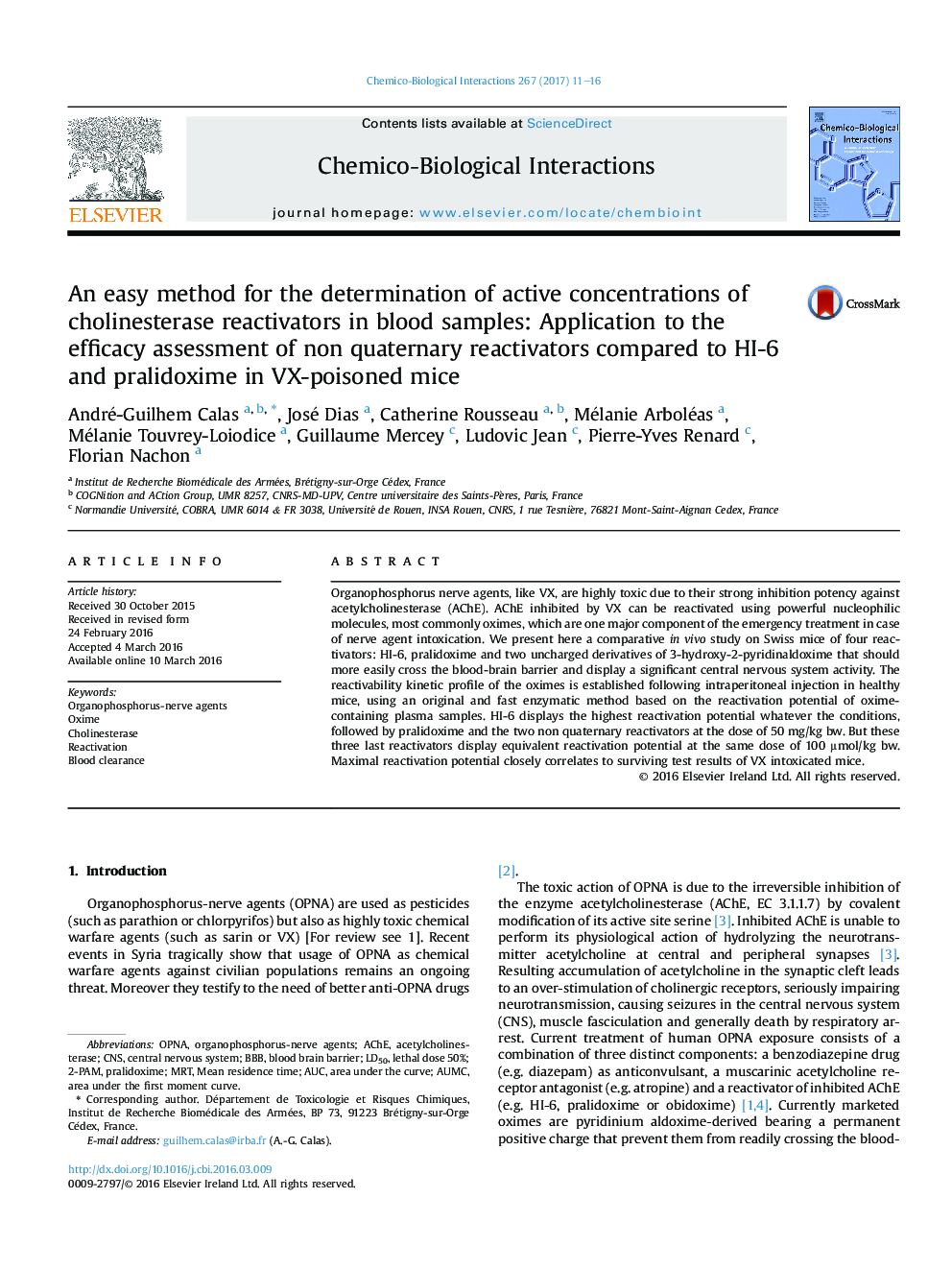| کد مقاله | کد نشریه | سال انتشار | مقاله انگلیسی | نسخه تمام متن |
|---|---|---|---|---|
| 5559363 | 1561575 | 2017 | 6 صفحه PDF | دانلود رایگان |

- A comparative in vivo study in mice of 4 reactivators of VX-inhibited hAChE is proposed.
- The reactivability kinetic profile of oximes in mouse blood is established by a new method.
- HI-6 displays higher reactivation potential than the two uncharged oxime tested.
Organophosphorus nerve agents, like VX, are highly toxic due to their strong inhibition potency against acetylcholinesterase (AChE). AChE inhibited by VX can be reactivated using powerful nucleophilic molecules, most commonly oximes, which are one major component of the emergency treatment in case of nerve agent intoxication. We present here a comparative in vivo study on Swiss mice of four reactivators: HI-6, pralidoxime and two uncharged derivatives of 3-hydroxy-2-pyridinaldoxime that should more easily cross the blood-brain barrier and display a significant central nervous system activity. The reactivability kinetic profile of the oximes is established following intraperitoneal injection in healthy mice, using an original and fast enzymatic method based on the reactivation potential of oxime-containing plasma samples. HI-6 displays the highest reactivation potential whatever the conditions, followed by pralidoxime and the two non quaternary reactivators at the dose of 50 mg/kg bw. But these three last reactivators display equivalent reactivation potential at the same dose of 100 μmol/kg bw. Maximal reactivation potential closely correlates to surviving test results of VX intoxicated mice.
Journal: Chemico-Biological Interactions - Volume 267, 1 April 2017, Pages 11-16